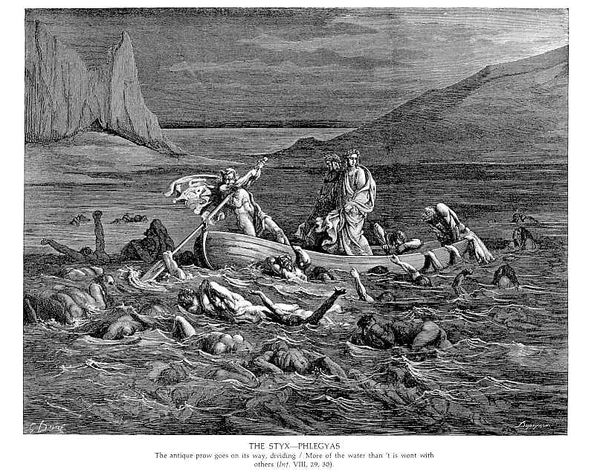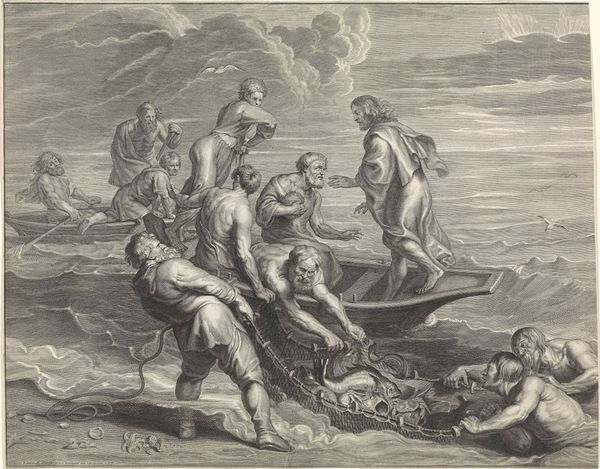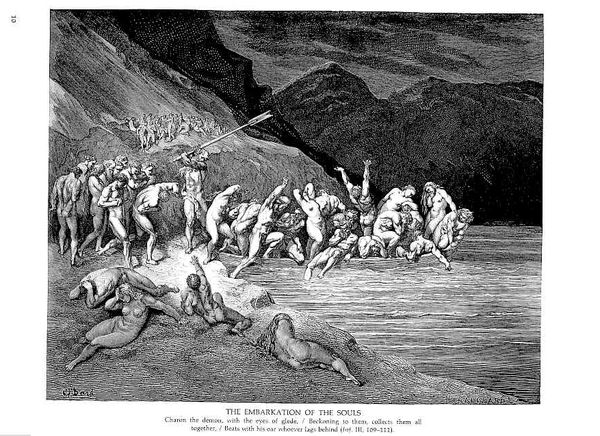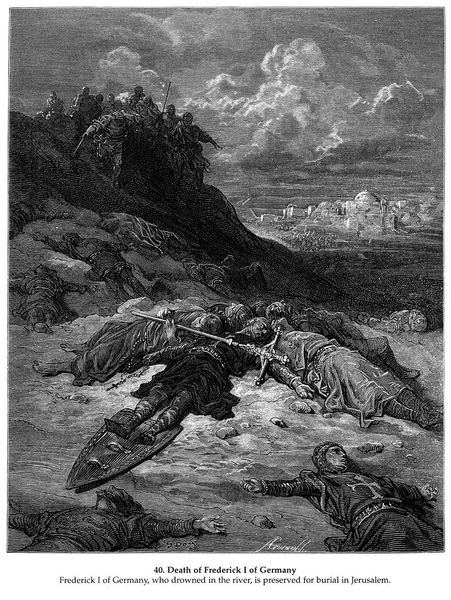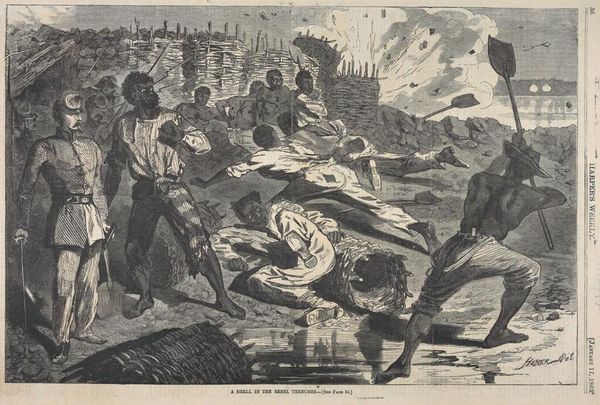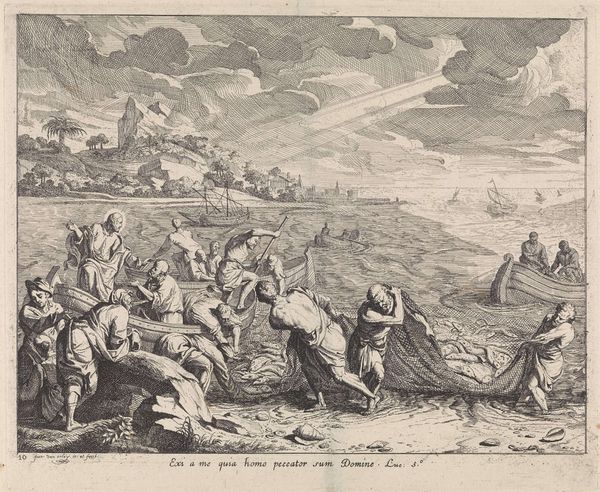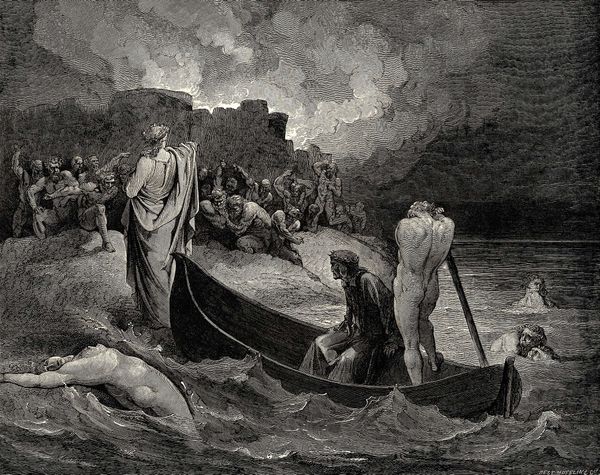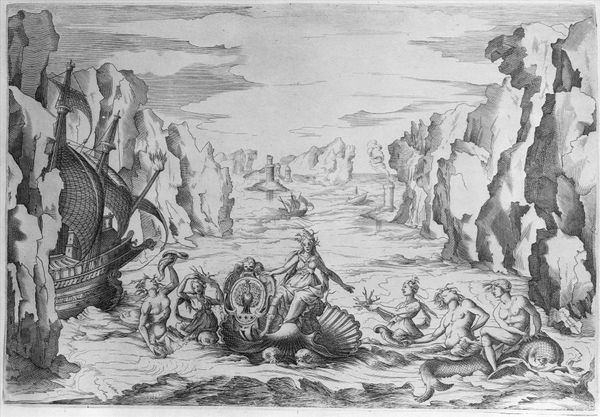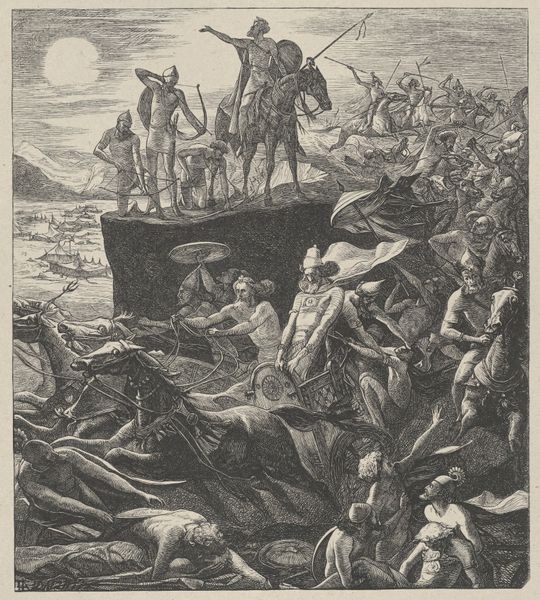
print, ink, engraving
#
boat
#
narrative-art
# print
#
landscape
#
figuration
#
ink
#
romanticism
#
genre-painting
#
history-painting
#
engraving
Copyright: Public domain
Gustave Doré made this engraving illustrating Canto 8 of Dante’s Inferno in the 19th century. The Divine Comedy, written in the 14th century, reflects the cultural values of medieval Europe, a world rigidly stratified by class and religious doctrine. Here, we see Dante and Virgil crossing the river Styx. Phlegyas, the boatman, ferries them across the putrid swamp where the wrathful and sullen are condemned to fight each other for eternity. Doré’s vision of hell reflects a Victorian sensibility: it is theatrical, crowded, and emotionally charged. The naked bodies of the damned are grotesque, their faces frozen in expressions of rage and despair. Doré’s vision of hell speaks to the perennial human concerns about justice, sin, and redemption, yet the themes of power, corruption, and the struggle for righteousness resonate across centuries, inviting us to reflect on our own moral compass. Doré captures the eternal struggle between good and evil, and the human capacity for both.
Comments
No comments
Be the first to comment and join the conversation on the ultimate creative platform.
